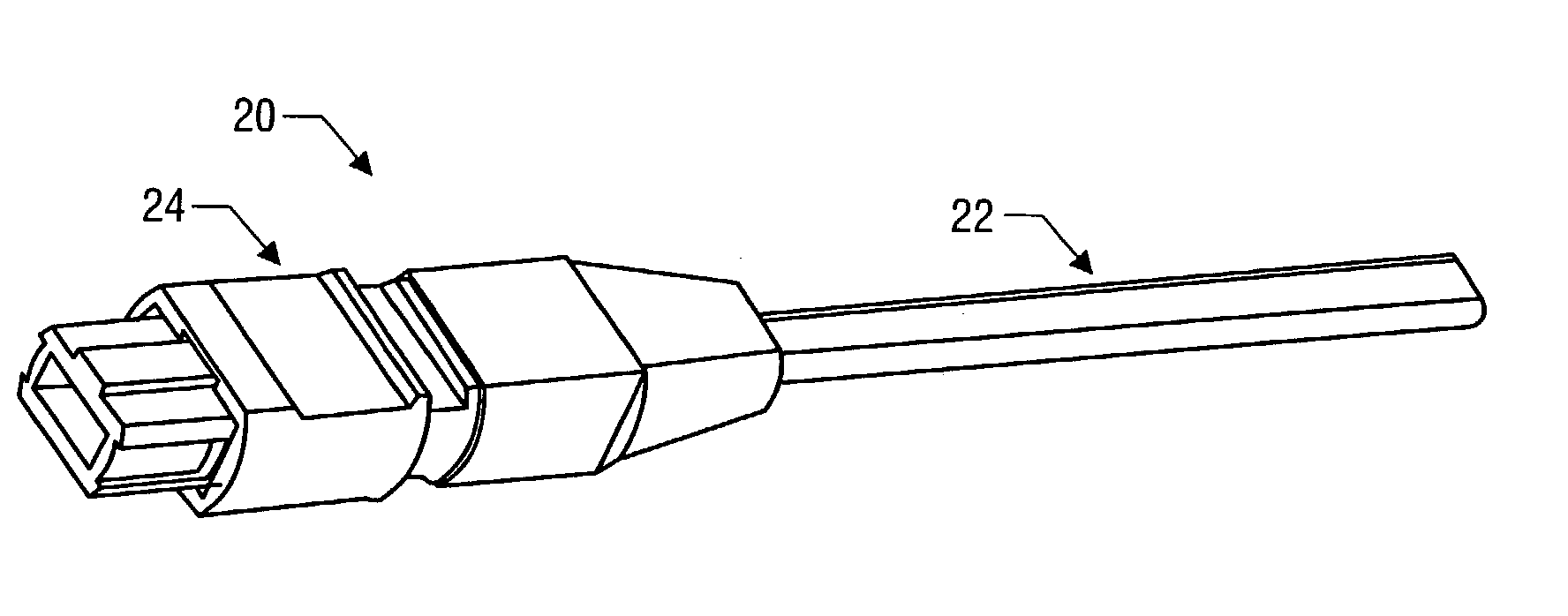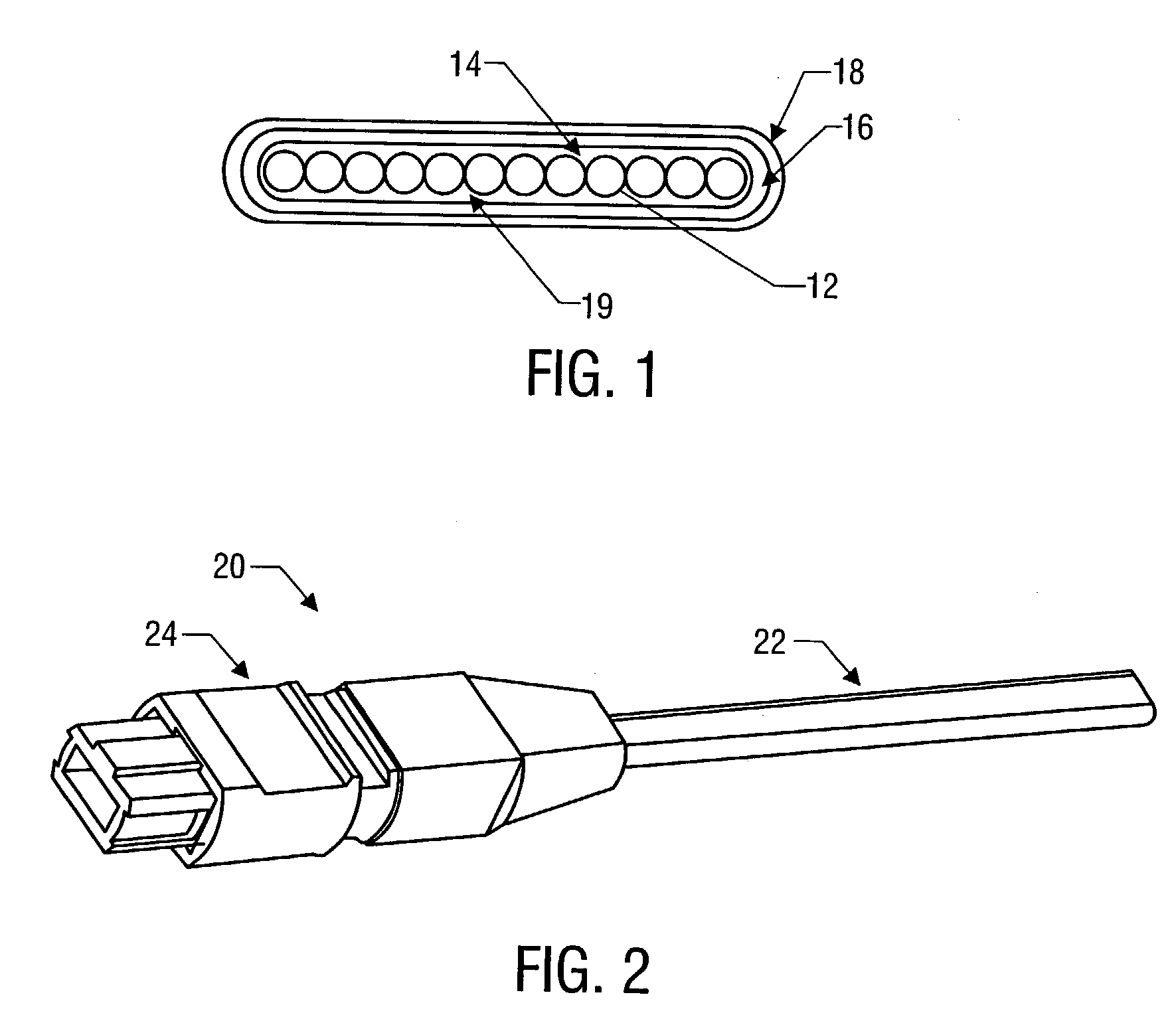Modified, field installable, field adjustable flexible angled boot for multi-conductor cables and process for installing the same
a multi-conductor cable and flexible angle technology, applied in the direction of optical elements, coupling device connections, instruments, etc., can solve the problems of cable re-straightening, cable elasticity is very stiff, and it is difficult to easily troubleshoot and repair the system, and the cable portion is very sti
- Summary
- Abstract
- Description
- Claims
- Application Information
AI Technical Summary
Problems solved by technology
Method used
Image
Examples
Embodiment Construction
[0039] Referring to the drawings, in particular to FIGS. 3A-3D, a connection cable assembly 30 is illustrated for use in applications where a connection cable is to be bent at or after initial installation. In general, the cable assembly 30 includes a multi-conductor cable component 31 that may be, for example, a multi-optical fiber ribbon cable as described above in connection with FIG. 1. The cable assembly further includes a connector 32 that, in the illustrated exemplary embodiment, is an MPO-type connector having a rectangular opening as described above in connection with FIG. 2. Coupled to the connector 32 are cable clips 33a and 33b and coupled to the cable clips 33a-33b is an angled boot 34. The outer exterior surface of the cable clips 33a and 33b is received in the interior of the angled boot 34 such that the angled boot 34 maintains a controlled and protective bend of the ribbon cable 31 as it exits the connector 32. The angle of the bend defined by the angled boot 34 is ...
PUM
 Login to View More
Login to View More Abstract
Description
Claims
Application Information
 Login to View More
Login to View More - R&D
- Intellectual Property
- Life Sciences
- Materials
- Tech Scout
- Unparalleled Data Quality
- Higher Quality Content
- 60% Fewer Hallucinations
Browse by: Latest US Patents, China's latest patents, Technical Efficacy Thesaurus, Application Domain, Technology Topic, Popular Technical Reports.
© 2025 PatSnap. All rights reserved.Legal|Privacy policy|Modern Slavery Act Transparency Statement|Sitemap|About US| Contact US: help@patsnap.com



